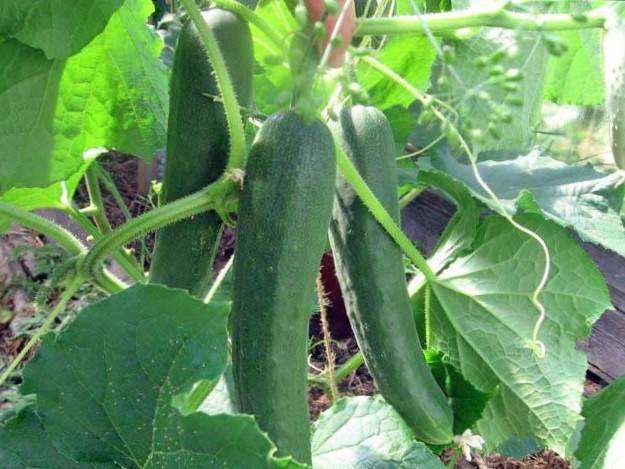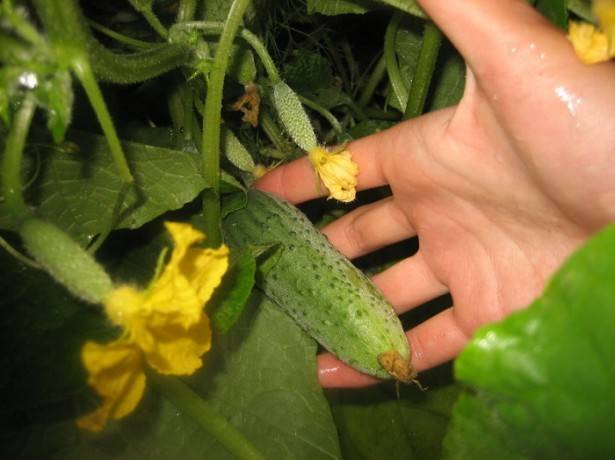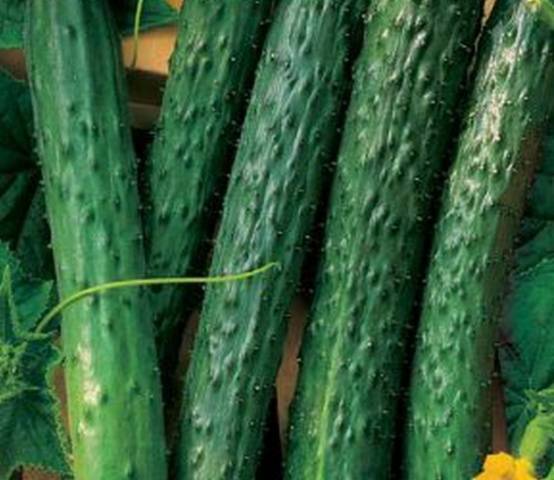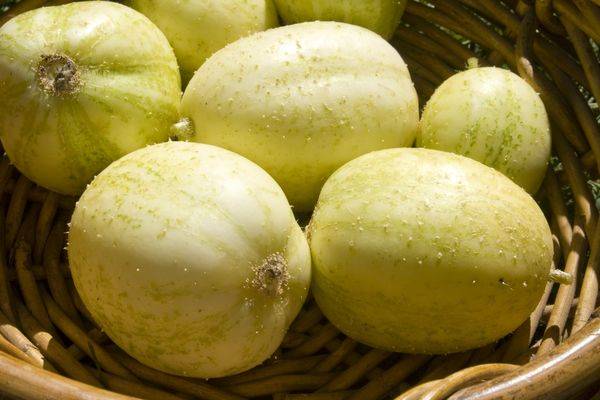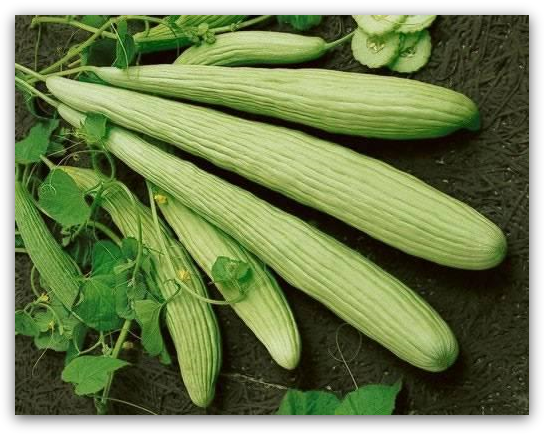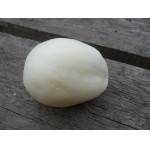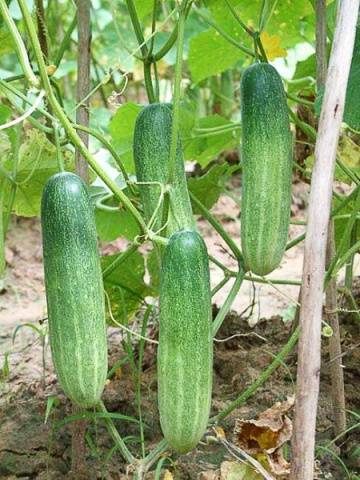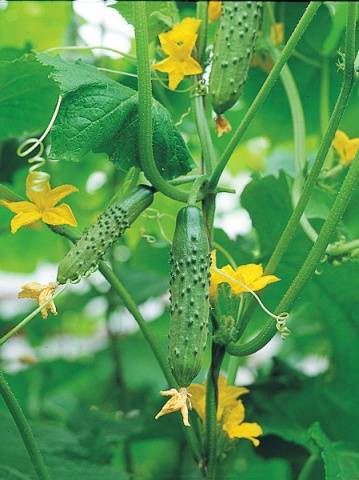Content
- 1 Winter-spring greenhouse varieties
- 2 Spring-summer greenhouse varieties
- 3 Summer-autumn greenhouse varieties
- 4 What cucumbers are preferred, and where does bitterness come from
- 5 Exotic cucumbers in a polycarbonate greenhouse
- 6 Review of the best varieties of cucumbers for polycarbonate greenhouses
- 7 Conclusion
Such a seemingly simple culture like a cucumber requires difficult care in order to get a good harvest. And if you still want to have early fresh vegetables or late ones out of season, you will, in general, have to tinker with the greenhouse. Polycarbonate is best suited for glazing of this design. However, in addition to a good greenhouse, you need to pick up quality seeds. To succeed in a difficult business, let's consider which are suitable varieties of cucumbers for the greenhouse from polycarbonate, and find out their varieties.
Winter-spring greenhouse varieties
If you want to get early fresh vegetables in the spring, the seeds will have to be sown in February. Naturally, this will require winter-spring varieties. Numerous reviews of gardeners about this group are inclined in a positive direction. Which varieties are the best will have to be selected empirically, but first you can try to sow the following hybrids:
- Hybrid "Blagovest 1" stands out for its large bush shape due to the many constantly growing lashes. The plant belongs to self-pollinating varieties, is not afraid of powdery mildew and other traditional diseases. The peel of a cylindrical vegetable is covered with small pimples. One cucumber weighs no more than 85 g. Early fruits are suitable for consumption both raw and for pickling.
- Early fruits can be obtained from the hybrid "Moscow Greenhouse F1". The plant belongs to the parthenocarpic species. Long tasty fruits about 40 cm in size are not suitable for conservation, they are eaten raw.
- The average ripening hybrid "Relay F1" belongs to the pollinated species, therefore, its planting is calculated so that bees appear on the street by the time of flowering. The weight of one vegetable reaches 200 g. The cucumber often goes as a salad, although in rare cases it is pickled.
- Another medium-ripening hybrid "Manual F1" is pollinated only by bees. The plant is not afraid of many diseases, however, with early planting, it is often affected by necrosis. As a fresh vegetable, it is only suitable for salads.
For the first time in a polycarbonate greenhouse, you can plant several different hybrids in order to empirically determine which of them is the best. They do not get pollinated, the main thing is not to forget to mark the varieties for yourself.
Spring-summer greenhouse varieties
Now let's take a look at the best greenhouse varieties suitable for summer cultivation. Two hybrids are popular among experienced gardeners:
- The most popular hybrid is Zozulya F1. The plant is covered with flowers only of the female type, forming a friendly ovary. The weight of the finished fruit varies from 150 to 200 g.
- Many gardeners claim that the April F1 hybrid has the most delicious fruits, of course, when compared with other varieties of this ripening period. The weight of a cucumber can be from 160 to 300 g.
Plants of these varieties are considered high-yielding, plus they do not succumb to many diseases.
Summer-autumn greenhouse varieties
Considering what are the best hybrids for growing in a greenhouse, from July to November, you need to pay attention to the following varieties:
- If you can't wait to get a quick harvest, the best option is to purchase the seeds of the Maryina Roscha F1 hybrid. The early ripening cucumber of the parthenocarpic species is unpretentious and adapts to different growing conditions. The fruit with large pimples goes well in salting.
- Fans of gherkins, of course, will like the fruits of the Anyuta F1 hybrid. The plant quickly develops lashes, provided there is abundant light, which is characteristic of glazed polycarbonate greenhouses. Small pimply fruits are most often used for pickling.
The considered varieties of the autumn ripening periods are considered the best because of their unpretentiousness and good taste. This does not mean that you should stop your choice only on them, because there are many other hybrids.
What cucumbers are preferred, and where does bitterness come from
Studying the demand for vegetables, an interesting fact was revealed that the domestic consumer prefers cucumbers with pimples, considering them a national vegetable. The European consumer, on the other hand, loves smooth-skinned cucumbers. However, which one is the best doesn't matter, it all depends on the person's preference.
But I wonder where the bitterness comes from? The fact is that at high temperatures and insufficient watering, the alkaloid cucurbitacin is produced in the peel. It is this substance that gives a very bitter and unpleasant taste. The composition of the soil can also affect this, but in order not to get a bitter crop in your greenhouse, you need to acquire new varieties. Thanks to the work of breeders, new hybrids practically do not accumulate bitterness in any growing conditions.
Exotic cucumbers in a polycarbonate greenhouse
For those who like experiments and who want to surprise their relatives and neighbors with exotic vegetables, you can plant hybrids of unusual shapes and colors in the greenhouse. The best of the unusual varieties are considered to be white fruits of the Bride variety. Delicate and tasty cucumber with an excellent aroma is suitable even for pickling.
Lovers chinese cucumbers can also grow them in a polycarbonate greenhouse. However, the presentation is not very good. The fruit is often uneven, but the taste remains consistently great. The Peking variety is ideal for growing. It bears fruit before the first frost, even in an unheated greenhouse.
However, exotic lovers should take into account that even for a polycarbonate greenhouse, it is better to select varieties designed for the weather conditions of a particular region.
Other interesting varieties for the greenhouse include the following exotic cucumbers:
- The "Lemon" variety, when ripe on lashes, forms round yellow fruits. One bush can be harvested 8 kg.
- The appearance of the Armenian cucumber resembles a squash with pumpkin leaves, and the crunchy flesh has a melon aroma. The sweetish taste prevails in the cucumber.
- The plant with small fruits called "Melotria rough" is famous for its decorative effect. However, the unusual cucumber is delicious and resembles a small watermelon.
- The Chinese vegetable "Golden Dragon Egg" is popular among gardeners. The high-yielding plant bears yellow fruits with a fruity flavor.
But this is all exotic, and now it is better to return to traditional green cucumbers and choose the best varieties for the greenhouse.
Review of the best varieties of cucumbers for polycarbonate greenhouses
For greenhouse cultivation, there are about sixty varieties of cucumbers. We will consider the most popular in taste and yield.
Annushka F1
The best early ripening hybrid for a polycarbonate greenhouse is considered versatile, as it can grow even in an open garden. It goes for conservation and fresh consumption.
Bouquet
The early ripening gherkin ripens 30 days after planting in the ground. The plant has weak branching and is not afraid of many diseases.
Gladiator
A mid-season hybrid has a high yield. The plant is unpretentious in care, adapts to aggressive conditions, which made it popular among greenhouse owners.
ABC
The gherkin type hybrid forms bundle ovaries, and belongs to a high-yielding variety. Small cucumbers ripen quickly, gaining a sweetish taste. The fruits are great for preservation.
Green wave
Another early maturing variety of the universal type is suitable for planting in open and closed ground. The plant produces stable yields even under unfavorable conditions.
Goosebump F1
The early ripening variety is characterized by the formation of bundle ovaries. Suitable for pickling and fresh consumption. A vegetable cannot genetically accumulate bitterness.
Thumb Boy
The early ripening variety is ideal for polycarbonate greenhouses. The plant tolerates many diseases, and after 40 days, the first crop can be removed.
Benefit F1
An early ripening hybrid does not accumulate bitterness in the fruit. The cucumber is good in salting and fresh. The plant is resistant to many traditional diseases.
Pet F1
An early ripening variety of cucumbers has crunchy fruits that are incapable of accumulating bitterness. During flowering, the plant forms bundle ovaries.
Siberian garland F1
This hybrid can be given the first place when grown in polycarbonate greenhouses. Small sweetish fruits can be harvested before the first frost.
This video shows recommendations for choosing varieties:
Conclusion
Choosing the best varieties for greenhouses, you need to buy seeds only in branded packaging, and in no case packaged in transparent bags. This increases the chance to avoid counterfeiting.


